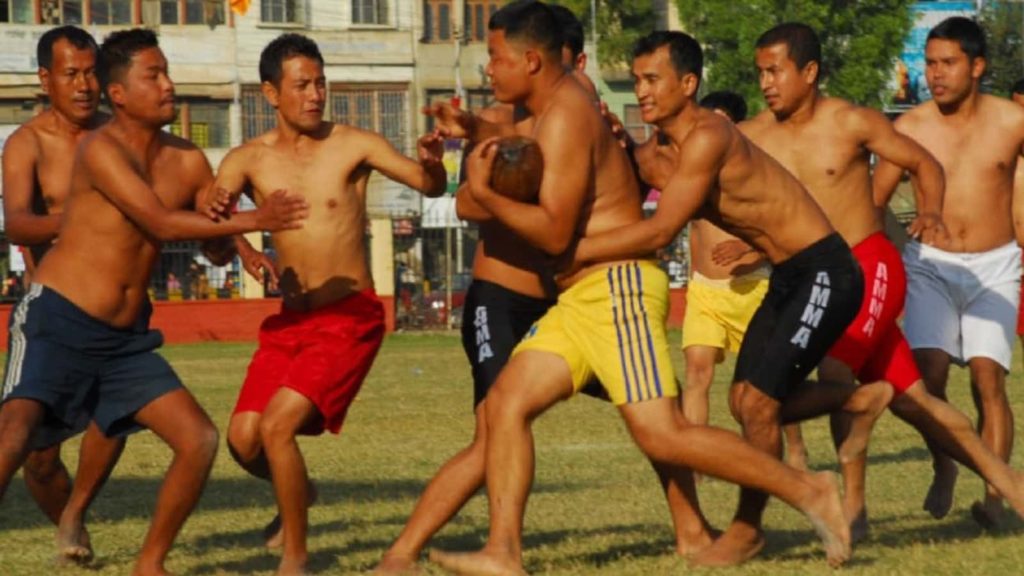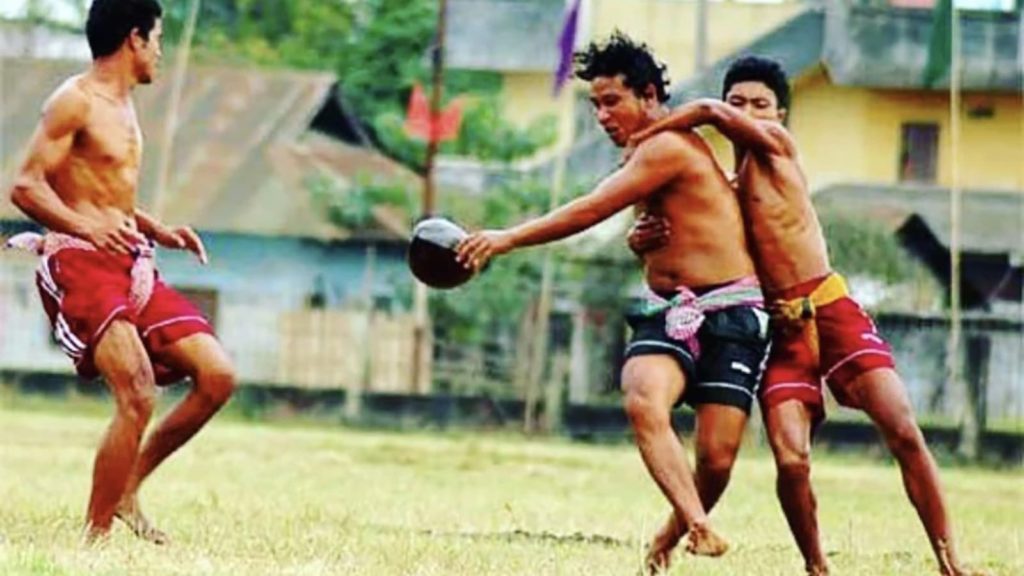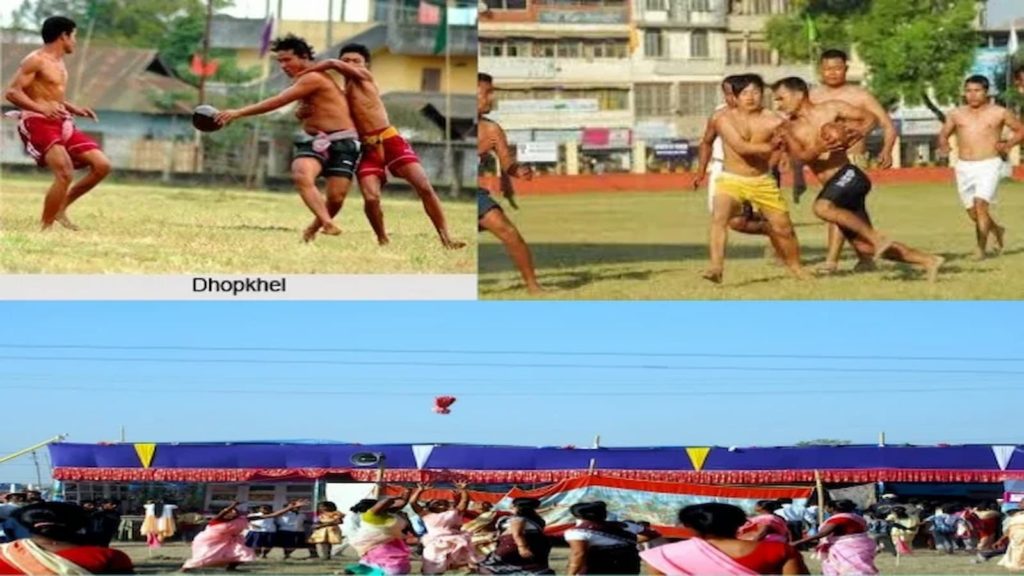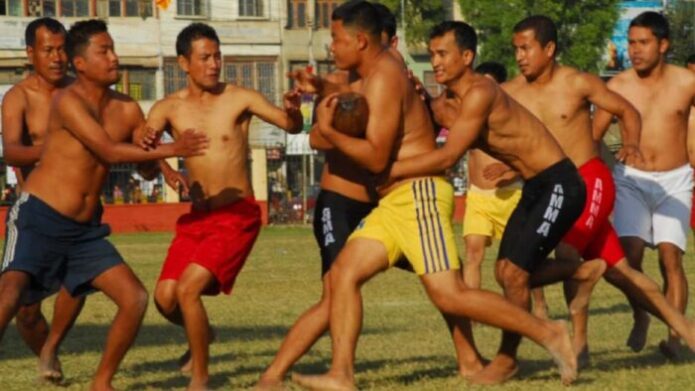There are many thousands of games which are unknown to many of us. One of such game is Dhopkhel, a traditional indigenous ball game played in Assam, India. The word ‘Dhopkhel’ is a combination of two words Dhop which means Ball and Khel which means game. It is played at the times of of state’s spring and the new year festival which is known as Rangoli Bihu. Therefore it is known as Seasonal Game. This game was once played as a spectator sport for royal patronage of the Ahoms. It is among one of the unusual and less-renowned game. It is an Indian style Rugby game.
about Dhopkhel

There are two teams which consists of eleven members each. The field measures 125m x 80m and there is a central point. There are two lines drawn at a distance of 125 ft on each side of the point at the center. At the four points where the kai meets 125 m lines, 4 flags are planted in the four corners known as Chukor Nishan. In each half of the field, there is one point each at a distance of 13’6” from the center. And, the circles which surround them are known as Gher.
This game is not restricted to any gender and it can be played by both men as well as women. Like all other games, this game also requires skills. Each player needs to be physically fit, have good speed, high stamina and acrobatic skills. This game, is sometimes, is considered similar to Kabaddi.
The Rules Of This Game

Dhop which is a rubber ball is thrown by the player in air with intention to throw it in the opponent’s court. If in case the ball doesn’t cross, they have to throw the ball again. If the opponent fails to catch the ball the player has to throw the ball. And if the opponent throw the ball and if the opponent catches the ball then he/she has to throw it towards a player who stands at the opposite end of the court. This player is known as Katoni. And, if Katoni fails to catch the ball then the team loses the chance to throw and other team gets opportunity. This game is filled with many other such rules which are a bit complicated.
If the Katoni is hit below the waist then it is considered as Kota and thus the katoni loses his status of Ghai, a name initially used for all the players and becomes a Bondha or Hoia. The Bondha has a tough task to perform. He/she has to go to opponent’s team with an intention to avoid the opponent team’s players to catch the ball. And catch the ball himself and reaches in his court without any physical contact between the opponent team’s player and the ball. Such strategy is called Aulia. Therefore, if he succeeds in doing so then the player again becomes a ghai and such move is called Hora.
Also Read: Sagol Kangjei: The Traditional Meitei Polo – Rules, history, uniform, methods, & seasons
Other Rules
Furthermore, the player has to make sure that he/she does not go out of the field while making such an attempt. When 10 ghais of a team, turns into hoia or bondha then the last ghai becomes a Ghai katoni, and if kota is done to him then then it is called as Piriutha and it signifies victory for the side. The team which has more number of ghais, is declared the winner and in case there are equal numbers of ghais then the game is drawn.
Playing Dhokhel in Today’s Time

Dhopkhel which was once played for royal patronage as well is now no longer played. Also, many efforts are being done in order to revive it. Naoren Mohen, the founder of modified Northeast India have identified some indigenous sports, Dhopkhel is one of them and is trying his best to gloom them among the youth. More such efforts should be made such as spreading knowledge about such traditional sports. Moreover, by providing proper training and opportunities to youth, we can keep alive the essence and fun of such sports.

